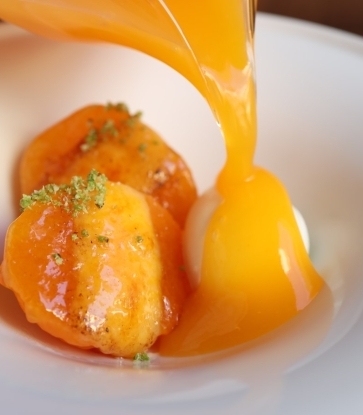Snapper and sea bream, for instance, are delicate in flavour when eaten fresh. Yet age these fish for two to three days and a deep flavour starts to develop.
"Fish that tend to have more connective tissue usually benefit more from the process, as it will help break down those tissues and fibres into natural sugars and glutamates," says Max Levy, owner of modern sushi bar Okra in Hong Kong.
The New Orleans-born chef first noticed a distinct difference in the taste of aged and dried fish when he dined at a French restaurant in Tokyo six years back. "I had a classic sole meunière done with hirame (Japanese fluke) as a substitute. It should have been amazing... (the fish) was sashimi grade, line-caught and had been prepared using ikejime and bled out; all of which should create a superior dish," says Levy. "But it failed to provide any "fishiness" to stand up to and pair with the butter and strong herbs."
These classic French dishes, he shares, were developed for fish that was not bled and not always kept on ice from catch to delivery.

Much like ageing beef, the process for ageing fish requires the same controlled environment where the temperature and humidity levels are carefully monitored.
"A main difference is when we age beef, larger cuts are being used and the focus is more on evaporation," shares Levy.
The fish is usually caught, then killed using the ike jime method on the boat. It is then delivered straight to the restaurant where the catch is gutted, scaled and washed with mild salt water. It is then wrapped in a breathable antimicrobial towel and stored in a box at 4-6˚C for a few days, depending on the thickness of the fish.
By day 3, the meat takes on a denser but firmer texture from water loss. The enzymes in the meat's muscle cells begin to break down the meat's proteins, fats, and glycogen—a carbohydrate into amino acids, fatty acids, and sugars. There's also a dramatic increase in glutamate - the key ingredient that produces umami flavour.
The fish is checked and washed everyday to prevent growth of foreign moods and enzymes.

The best way to savour this fish? Pair its newly-developed flavours with rich ingredients such as butter and foie gras. "Dry-aged fish is the best complement to animal fats. The increase in savouriness makes the fish able to pair with stronger ingredients," says Levy.
The young chef also enjoys dry-ageing sashimi grade fish for longer periods, then using them in simple vegetable and seaweed soups.
























